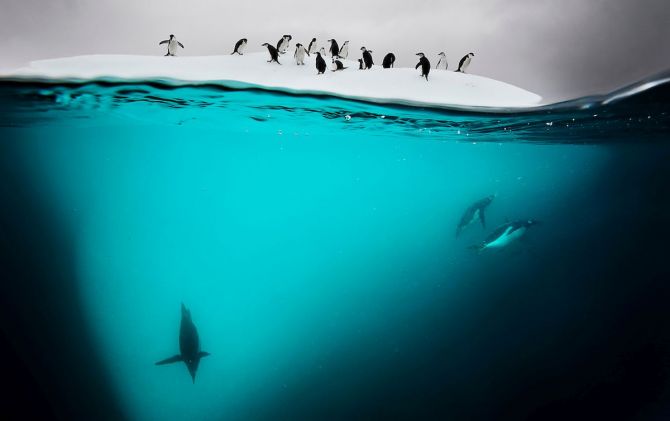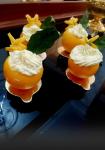Love wildlife and want to help in saving them? Here's a chance to do so from the comfort of your house.
Presenting Prints for Nature -- a fine art photographic print sale offering collectors the chance to own work from some of the most impactful names in the photography industry and contribute to conservation.
The initiative was created by National Geographic photographer Ami Vitale and includes eighty-five fine art and nature photographers who have generously donated prints for this cause.
All of the net proceeds will go directly to support Conservation International’s core initiatives. It will support those on the front lines protecting our wild lands and our most vulnerable species, at a time of critical need.
The sale ends December 10, 2020. Please visit https://www.printsfornature.com/ to learn more.
LEKUPANIA AND GIRAFFE

An orphaned reticulated giraffe nuzzles Sarara Camp wildlife keeper Lekupania. This giraffe was rehabilitated and returned to the wild, as a number of others have done before him. Right now, giraffe are undergoing what has been referred to as a silent extinction. Current estimates are that giraffe populations across Africa have dropped 40 percent in three decades, plummeting from approximately 155,000 in the late 1980s to under 100,000 today. Photograph: Ami Vitale/Prints for Nature
RAJAN SWIMMING

This is Rajan. An Asian elephant that was brought to the Andaman Islands in the 1950s to help extract timber from the jungles. Along with a small group of 10 elephants, he was forced to learn how to swim in the ocean to bring logged trees to nearby boats. When logging became banned in 2002, Rajan was out of a job. He was the last of the group to survive and enjoyed his retirement by swimming in the ocean and foraging in the jungle he once used to log. He died at the age of 66 in 2016. Photograph: Jody MacDonald/Prints for Nature
CRITICALLY ENDANGERED SUMATRAN ORANGUTAN, PONGO ABELII

A critically endangered sumatran orangutan, Pongo abelii, at the Gladys Porter Zoo in Brownsville, TX. Photograph: Joel Sartore/National Geographic Photo Ark
ANNA'S HUMMINGBIRD

An Anna's hummingbird hovers below a makeshift fog machine used by scientists to study the airflow around its wings. Photograph: Anand Varma/Prints for Nature
BISON AT THE NATIONAL ELK REFUGE

Bison- National Elk Refuge, Jackson, WY. Photograph: Charlie Hamilton James/Prints for Nature
COMMON OCTOPUS

Common Octopus, Scientific Name: Octopus vulgaris, Size: 3.5 inches mantle length. Photograph: David Liittschwager/Prints for Nature
HUMPBACK WHALE AND CALF IN TONGA VAVA'U

Humpback Whale and her calf swimming in Tonga Vava'u. Photograph: Michaela Skovranova/Prints for Nature
COUGAR IN GRIFFITH PARK

This image was taken for the first ever @natgeo wild cougar story. I was looking for an image that spoke to the fact that as our cities expand we move into the forests and grasslands - the homes of animals. The photo sparked a movement to protect southern California’s last cougars and other wildlife in two large protected areas bisected by the 101 Freeway north of Los Angeles. It will be the World’s Largest Wildlife Overpass—and will be completed by 2022. Photograph: Steve Winter/Prints for Nature
SAFE PASSAGE

Elephant herd returning from the marsh in Amboseli, crossing the dry country in search of food. Photograph: Beverly Joubert/Prints for Nature
GENTOO AND CHINSTRAP PENGUINS ON AN ICE FLOE

Chinstrap and gentoo penguins were resting on a bergy bit near Danco Island, Antarctica. They carefully gauged my presence in the water as a potential predator. Once they decided I was harmless they lept into the water and circled their tiny island of ice more curious than cautious. Photograph: David Doubilet/Prints for Nature
A BLACK-BROWED ALBATROSS IN THE FALKLANDS/MALVINAS ISLANDS

A black-browed albatross rests on it’s nest on New Island. Despite the fact that the black-browed albatross has been found to be the most common bird killed by fisheries, this large seabird is the most widespread and common member of its family. Photograph: Jasper Doest/Prints for Nature
CRABEATER SEALS

Crabeater Seals, Lobodon carcinophaga, view from above while they are resting on the broken ice of the Antarctic peninsula. The biomass of this species is four time higher than the other seal, plus they are the fastest seal in the water. Photograph: Florian Ledoux/Prints for Nature
AMBOSELI QUEEN

Amboseli Queen. Photograph: Marina Cano/Prints for Nature
ADULT STAG IN SNOWSTORM

n adult stag is partially obscured during a ferocious snowstorm Cairngorms National Park, Scotland. Photograph: Andy Parkinson/Prints for Nature

























 © 2025
© 2025